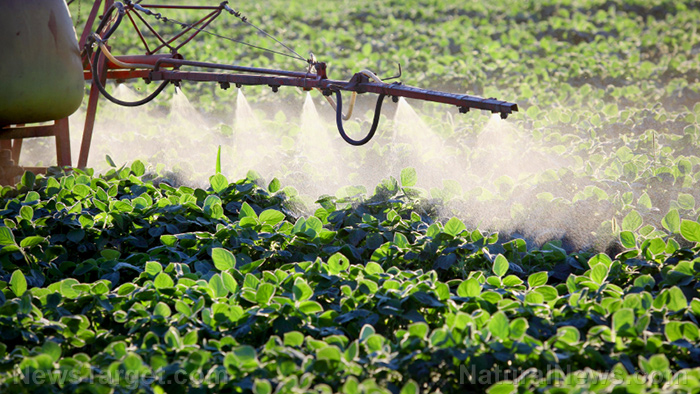Clethodim – toxicity, side effects, diseases and environmental impacts
12/05/2017 / By Earl Garcia

Clethodim is a synthetic, selective herbicide that is used to eliminate both annual and perennial grasses. According to the Pesticide Properties DataBase website, the toxic chemical helps eradicate barnyard grass, brome and canary grass as well as crab grass, foxtail and goose grass. The compound is also used to effectively kill rye grass, shattercane and volunteer cereals.
The herbicide is first introduced in 1987 and is applied to a wide array of crops, including:

List of known side effects
An entry featured on the Pesticide Action Network North America (PANNA) website reveals that clethodim may cause reproductive and developmental toxicity, neurotoxicity and acute toxicity. The article notes that the harmful substance primarily targets both the muscular and the central nervous systems, and triggers the onset of excessive salivation, reduced motor activity and decreased coordination as well as unsteady gait and hyperactivity.
Exposure to the synthetic herbicide may also lead to reduced fetal body weight, smaller litter size and marked increases in cervical rib deformation, according to an Extension Toxicology Network article. Likewise, the chemical is associated with an increased risk of severe skin allergies, eye irritation and digestive woes.
Furthermore, an article published on the Pub Chem website has revealed that the toxic herbicide may contaminate water sources and imperil aquatic flora and fauna. The hazardous chemical is known to negatively affect aquatic animals including certain species of fish, invertebrates and crustaceans. Moreover, clethodim is notoriously harmful to aquatic plants, algae and sediment residing organisms.
The toxic herbicide is known to pollute the air, soil and groundwater too. Furthermore, the hazardous substance is recognized as highly toxic to both birds and mammals as well as other beneficial organisms such as honeybees, arthropods and earthworms.
Body systems affected by clethodim
Clethodim is particularly detrimental to both the muscular and the central nervous systems. Likewise, the harmful compound is highly toxic to the digestive tract, the eyes and the skin.
Items that can contain clethodim
Clethodim is the primary chemical component of many trade name herbicides including Cletodime, Select 240 and Centurion. The hazardous compound is available in emulsifiable concentrate formulation. The herbicide is widely used across Europe, Australia and the U.S.
How to avoid clethodim
A safety data sheet published by the Kelly Solutions recommends using protective clothing, gloves, and respiratory equipment to mitigate the risk of clethodim exposure. Likewise, the safety guidelines suggest that work spaces install adequate ventilation to reduce the likelihood of direct contact with the chemical. The data sheet also recommends that people exposed to the chemical be taken to an area with fresh air. Victims are advised to thoroughly wash their eyes and skin should direct contact occur. The data sheet urges victims to seek immediate medical help as well.
The fact sheet also suggests using sand and other absorbent materials in cleaning to reduce workplace exposure at the event of an accidental spill. The safety guidelines also recommend that people vacate the area immediately following an spill due to the herbicide’s combustible properties.
Where to learn more
- Weed killer found contaminating most popular US foods, including many non-GM products
- The hidden weed killer in your BREAD: Commercial wheat doused with cancer-causing glyphosate herbicide right before harvest… and you’re eating it!
- California declares glyphosate weed killer (Roundup) to be a cancer-causing poison; will add to Proposition 65 warning list
- Coincidence? Monsanto patented glyphosate as an “antibiotic” drug, claiming weed killer is medicine
- AUTONOMOUS PLANES now weaponized as pesticide delivery platforms to inundate farmland with toxic chemicals
- Autism, brain and CNS disorders overwhelmingly linked to people in close proximity to pesticide spraying
Summary
Clethodim causes reproductive and developmental toxicity, neurotoxicity and acute toxicity.
Clethodim exposure leads to reduced motor activity and coordination, unsteady gait and hyperactivity.
Clethodim may trigger the onset of severe skin allergies, eye irritation and digestive woes.
Clethodim is detrimental to both the muscular and the central nervous systems.
Clethodim is highly toxic to the digestive tract, the eyes and the skin.
Sources include:
Tagged Under:



















